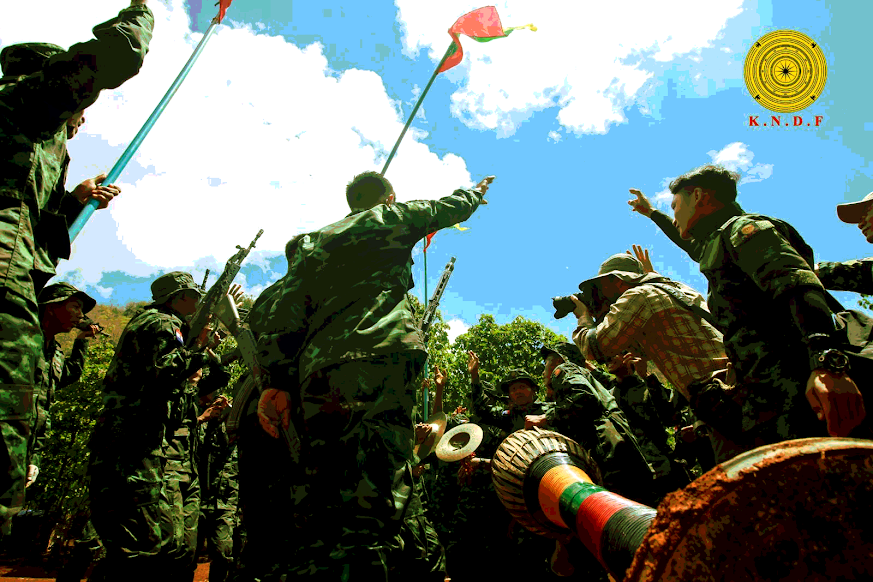Reorganization and Consolidation Needed Amid Shifts in NUG/MOD-aligned Battalions
Myanmar Spring Chronicle – April 21 Overview
MoeMaKa, April 22, 2025
In recent weeks and months, several battalions under the National Unity Government’s Ministry of Defense (NUG/MOD) have reportedly resigned, surrendered arms, or shifted alliances—either forming independent local PDF units or merging with other resistance forces. These updates have frequently appeared in local news coverage.
Roughly two years ago, four battalions in Yinmabin District, operating under Bo Naga, were receiving support from MOD. However, when MOD suspended its support and issued orders to dismiss them from official command, the battalion leaders declared they would continue to operate under MOD. In response, Bo Naga ordered them to surrender their weapons, sparking internal conflict. This incident appeared less about rebellion and more about disagreements stemming from inadequate support and command friction.
In early 2025, three battalions from Southern Shan State—Battalion 1005, SSPDF, and SSRY—also announced they were withdrawing from MOD. Reports suggested that their refusal to comply with troop relocation orders from MOD was the main reason.
In another notable case, in southern Karen State, two battalions known as KyarPhyu (White Tiger) Column and Galone Column, long considered part of the local resistance network, announced their withdrawal from MOD earlier this year. While no official statement was released, reports indicated they could not or would not follow JOC (Joint Operations Command) relocation orders. The JOC represents a coordination body between the KNU/KNLA and MOD.
Additionally, in the Yaw region, the Gangaw PDF battalion declared its departure from MOD and realigned with a new local force known as the Yaw Army (YA).
Most of these exits have occurred at the battalion level, though some individuals have left MOD units to join other resistance groups.
Why Are These Battalions Withdrawing from MOD?
Analysis reveals common patterns:
-
Insufficient logistical or financial support
-
Inability to follow or disagreement with MOD orders
-
Desire to collaborate more closely with ethnic armed groups active in their region
There are also criticisms that MOD’s support and resources are inconsistent, and that some local groups operate semi-independently, collecting local taxes and managing their own affairs—sometimes with little accountability to central leadership.
Signs of Weakening Central Control?
These withdrawals raise concerns over MOD’s ability to maintain centralized command. While some battalions were created under MOD from the start, others originated independently and joined MOD later. The fragmented and regional nature of Myanmar’s resistance has made full coordination difficult.
The flexibility of allowing battalions to resign or join freely is viewed by some as a strength, but others see it as a sign of weak discipline or structural vulnerability. Without clear hierarchy and accountability, MOD may face long-term difficulties in commanding and sustaining a united force.
Risks for Civilians and Governance
In areas where Local PDFs collect their own taxes and govern independently, civilians could face burdensome and unregulated taxation—especially in the midst of ongoing war, inflation, and economic hardship. Without oversight, overlapping claims and inconsistencies in governance may emerge.
Conclusion
The NUG and MOD must prioritize:
-
Strengthening coordination and support
-
Establishing clear command structures
-
Managing the movement and administration of battalions effectively
Equally important is ensuring that civilians are protected from both the consequences of war and governance fragmentation. As the revolutionary movement continues, strong leadership and organization will be key to its sustainability and legitimacy.

